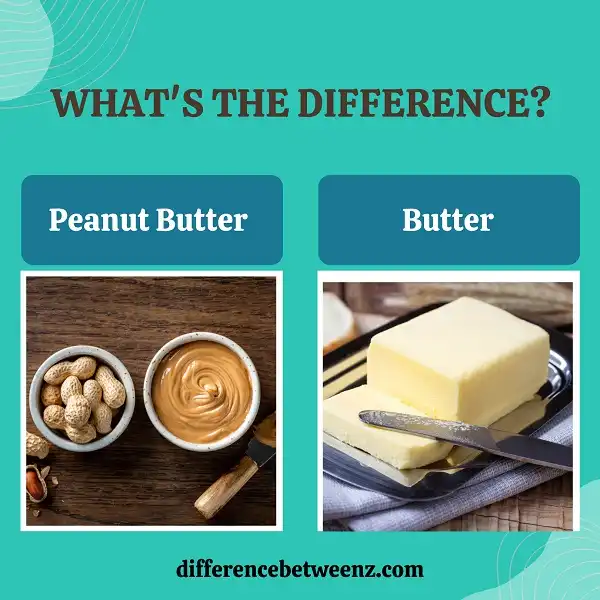When most people think of peanut butter, they think of the creamy, delicious spread that is perfect on toast, crackers and so many other foods. However, there is a big difference between peanut butter and butter. Peanut butter is made from ground peanuts while butter is made from milk fat. Peanut butter also contains about two thirds less saturated fat than butter. Consequently, peanut butter can be a healthier option for you when compared to butter.
What is Peanut Butter?
Peanut butter is a type of food paste or spread made from ground dry roasted peanuts. It often contains additional ingredients that modify the taste or texture, such as salt, sweeteners, or emulsifiers. Peanut butter is popular in many countries and is used as spreading on bread, toast, crackers, and similar products, as a filling in cakes and cookies, or as a candy bar ingredient. It is also used as an ingredient in some savory dishes. Peanut butter is nutritious and contains protein, monounsaturated fats, vitamins, and minerals. Peanut butter has been shown to provide health benefits, such as reducing the risk of cardiovascular disease and diabetes. Peanut allergies are relatively common, but severe reactions are rare. Peanut Butter can be purchased at most grocery stores. Some stores also sell Peanut Butter in bulk.
What is Butter?
- Butter is a dairy product made from the fat and protein in milk. It’s typically made from cow’s milk, but can also be made from the milk of other animals, such as goats, sheep, and buffalo. The process of making butter begins with cream that is churned to separate the butterfat from the liquid whey. Once the butterfat is separated, it’s combined with salt and any other desired ingredients, such as herbs or spices. The final product is then either packaged for sale or used in recipes.
- Butter has been a staple in kitchens around the world for centuries. In addition to being used as a spread on bread or toast, it’s also a key ingredient in many baking recipes. When used in baking, butter adds flavor, moistness, and density to cakes, cookies, and other treats. It’s also a popular cooking fat for sautéing vegetables or frying meats.
- Nutritionally speaking, butter is mostly composed of saturated fat and cholesterol. However, it also contains vitamins A and D, as well as some trace minerals. Despite its high saturated fat content, butter has not been shown to increase the risk of heart disease when consumed in moderation.
Difference between Peanut Butter and Butter
Peanut butter and butter are two common types of spreads used in sandwich making. Peanut butter is made from ground peanuts, while butter is made from the cream of cow’s milk. Peanut butter is available in smooth and chunky varieties, while butter is available in sweet and unsalted varieties. Peanut butter has a longer shelf life than butter, but both should be stored in a cool, dry place. Peanut butter is more versatile than butter, as it can be used in baking, as a dip for fruit or vegetables, or even as a spread on toast. Butter is mainly used as a spread on bread or toast, or for cooking purposes. Peanut butter is higher in protein and fat than butter, while butter is higher in saturated fat. Peanut butter is a good source of niacin, while butter is a good source of vitamin A.
Conclusion
Peanut butter and butter are two different types of spreads that can be enjoyed on bread, toast, or even pancakes. While they may seem similar because they are both used as a spread, there are some distinct differences between the two. For example, peanut butter is made from ground peanuts while butter is made from cream or milk. Additionally, peanut butter contains monounsaturated fats while butter contains saturated fats. Finally, peanut butter has a higher protein content than butter does. Whether you’re a fan of peanut butter or prefer to stick with good old-fashioned butter, we hope this article has helped you understand the difference between the two!


